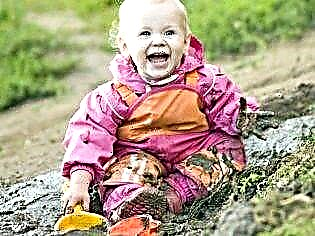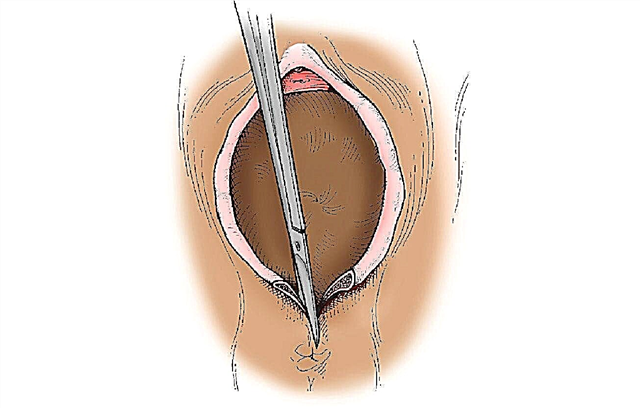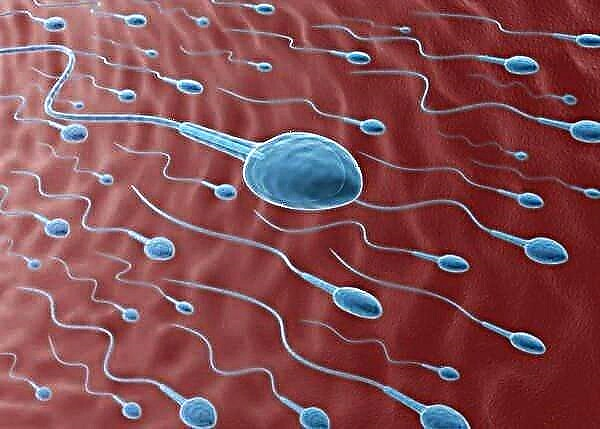
If a child has giardia, many parents have no idea who these creatures are and how they can be dangerous. Doctors and the Internet scare moms and dads with monstrous consequences, but often this is the case when the word itself is worse than what lies behind it. The authoritative pediatrician Yevgeny Komarovsky talks about how to perceive such a diagnosis as giardiasis, what to do and how to treat a child.

What it is?
Giardiasis doctors call a disease that is caused by unicellular organisms - the simplest lamblia. They live in the small intestine. The parasites themselves are divided into two types: active and live, with tentacles-flagella, which they deftly wield and stick to the wall of the small intestine, and motionless and inactive, which are called lamblia cysts.
It is as easy as shelling pears to become infected with lamblia, for this it is enough not to wash the vegetables and fruits bought at the market, or generally wash your hands less often, especially after playing outside, traveling in public transport, or shopping.

The simplest parasites enter the mouth and enter the small intestine.
There they live, multiply (sometimes very actively), sometimes irritate the mucous membrane of this part of the intestine.
If live and vigorous giardia penetrate the large intestine, they die, because the habitat there is not suitable for them. These individuals, which have become cysts, are excreted with feces.
This disease is most widespread among children, with a certain age group - from 1 to 4 years. However, it is children who tolerate the disease more easily than adults.

Symptoms
Quite often, there are no symptoms at all. It is possible to detect lamblia cysts quite by accident when a child is tested for admission to kindergarten or after another illness, when it is required to examine feces. Sometimes giardiasis can manifest itself with the following clinical picture:
- Frequent pain in the upper abdomen, around the navel.
- Increased flatulence, bloating, gas formation.
- Frequent attacks of nausea and vomiting in a child.
- Stool disorders - diarrhea alternates with constipation and vice versa.
- Atopic dermatitis (popularly called diathesis).
- Fatigue, slow weight gain, restless and unhealthy sleep, headaches, irritability and tearfulness.


It is possible to verify the absence or presence of lamblia only on the basis of laboratory tests of the child's feces.
However, it is not always possible to find cysts in it, and then, in the presence of characteristic symptoms, the doctor prescribes an unpleasant procedure - the introduction of a one and a half meter probe through the mouth to study the duodenal contents. In addition, a blood test is prescribed for the presence of antibodies to lamblia, such antibodies, according to medical reference books, usually appear about a month after infection.

The opinion of Dr. Komarovsky
About 30% of the world's population is infected with the simplest lamblia, says Komarovsky, and most of them are children. Despite the fact that mankind has known about lamblia for several centuries (they were discovered in 1861), these unicellular organisms are shrouded in a veil of secrets and myths.
The first is excessive danger. Yevgeny Komarovsky says that many patients, and even doctors, also tend to exaggerate the harm caused to the body by lamblia.
The second is the habitat. If a doctor tells you that Giardia lives in the liver or gallbladder, and therefore causes cirrhosis and biliary dyskinesia, you need to run away from such a doctor as soon as possible and as far as possible. Giardia can not survive anywhere except in the small intestine.

Earlier, almost until the middle of the 20th century, doctors really believed that lamblia and the biliary tract, as well as liver diseases, were related. But then numerous studies have refuted this information. In particular, it was found that rather "frail" lamblia, which are unable to survive in the conditions of the large intestine, in principle cannot exist in such an aggressive environment as human bile.


Not everything is simple with the diagnosis of the disease.
The only reliable analysis Komarovsky calls the analysis of feces for lamblia cysts. Other methods, including a blood test, will not show a reliable picture.
Evgeny Olegovich urges parents not to become victims of fraudsters if someone promises that with the help of the latest computer diagnostics they will find lamblia and other parasites in a child for a small fee. These protozoa cannot be found on x-rays or ultrasound.
If cysts were found in a child's feces, then this is not a reason to sound the alarm, says Yevgeny Komarovsky.
According to unofficial data, about 18% of kindergarteners in Russia have lamblia in their bodies, but at the same time they feel great and do not complain about anything.

Treatment
Treatment with established giardiasis is not always required, the doctor says. The child's immunity begins to "work" against giardia from the moment it sticks to the wall of the small intestine.
In a healthy child, immune protection is able to create such unbearable conditions for a simple organism such as lamblia that the parasite will leave the body on its own, without pills, ultrasound waves, folk remedies and other methods that traditional and non-traditional medicine offers today.
Giardiasis does not have a big load on children's immunity.
Doctors established this when they observed how the disease progresses in children with severe congenital forms of immunodeficiency (HIV). Their condition was no different from that of their healthy peers.
This does not mean that giardiasis should not be treated at all. There are especially difficult situations in which a specific treatment regimen is needed.

When and how to treat
If a child has diarrhea with detected lamblia lasts more than 10 days, if all other symptoms are present, including weight loss and pathological loss of appetite, if, in addition, the child suffers from atopic dermatitis, treatment may be necessary. Komarovsky emphasizes that in reality such a need arises extremely rarely.
The World Health Organization establishes the only indication for the treatment of giardiasis - prolonged diarrhea. If this symptom is not present, medication or other treatment is not necessary.
If treatment is still shown, then you do not need to tune in to long-term therapy. Today, according to Komarovsky, there are very effective medications that can get rid of parasites in the shortest possible time - from 1 to 3 days. A doctor should prescribe them.
To treat giardiasis with folk remedies, according to Evgeny Komarovsky, is ineffective, long and completely unnecessary. The same applies to treatment with various expensive dietary supplements (BAA). It also makes no sense to treat the problem with antibiotics, since giardia does not belong to bacteria.

The usual treatment regimen includes the use of drugs such as "Trichopol", "Furazolidone", "Tiberal".
Antihistamines and enterosorbents can be added to them.
Almost all young patients are recommended a special diet that has a positive effect on intestinal motility (cereals, applesauce, dairy products).
With prolonged diarrhea, which requires urgent intervention, drugs that can be taken once are often recommended, such as "Tinidazole". It is often recommended to be taken by the whole family, where at least one of the household members began to suffer from an acute form of giardiasis. Another effective remedy is Albendazole, the course of treatment for which will be 5 days.
Prevention
Washing hands is a good habit, but it practically does not protect against lamblia, says Evgeny Komarovsky. The fact is that these protozoa are found not only in humans, but also in animals, and if a dog or cat went to the toilet in the yard where the child walks, then with a great probability he will bring home cysts of lamblia on his shoes, which, if they get into a favorable the small intestine environment will come to life and begin to show activity.
The best prevention is prevention by the whole country, says Komarovsky, when the owners begin to remove excrement after their pets. But before that, most likely, many more decades will pass.
In addition, Giardia spreads well in water, including drinking water. And today, with the quality of drinking water in most Russian cities, things are quite deplorable. Moreover, the standard chlorination of water does not kill lamblia cysts.
Tips
The doctor focuses on the fact that washing your hands correctly means that you must wash them for at least 20-30 seconds with baby soap.
Teaching a child to wash their hands is not enough. It will be good if parents activate all their pedagogical skills and show maximum ingenuity and teach the child not to lick their hands. For this, all methods are good - from heart-to-heart talk to smearing pens with viburnum juice or mustard.
Fight the flies mercilessly.
They are 100% cyst carriers, and therefore must be destroyed.
If you have been treating a child for gallbladder problems for a long time and unsuccessfully, and the doctor says that the cause is lamblia, you should refuse to visit such a doctor.
If the doctor says that skin diseases in a child are exacerbated by lamblia, and they, these very protozoa, are guilty of frequent diseases of ARVI, ARI and other viral ailments, do not believe it. Giardia can't do that.
If, after all the arguments, the parents still have a persistent desire to deal with these parasites by hook or by crook, Komarovsky warns that the relief may be short-lived: some protozoa can be destroyed, others will settle in the child's body in a few days, perhaps even hours.

You will learn more about the recommendations of Dr. Komarovsky in the following video.



